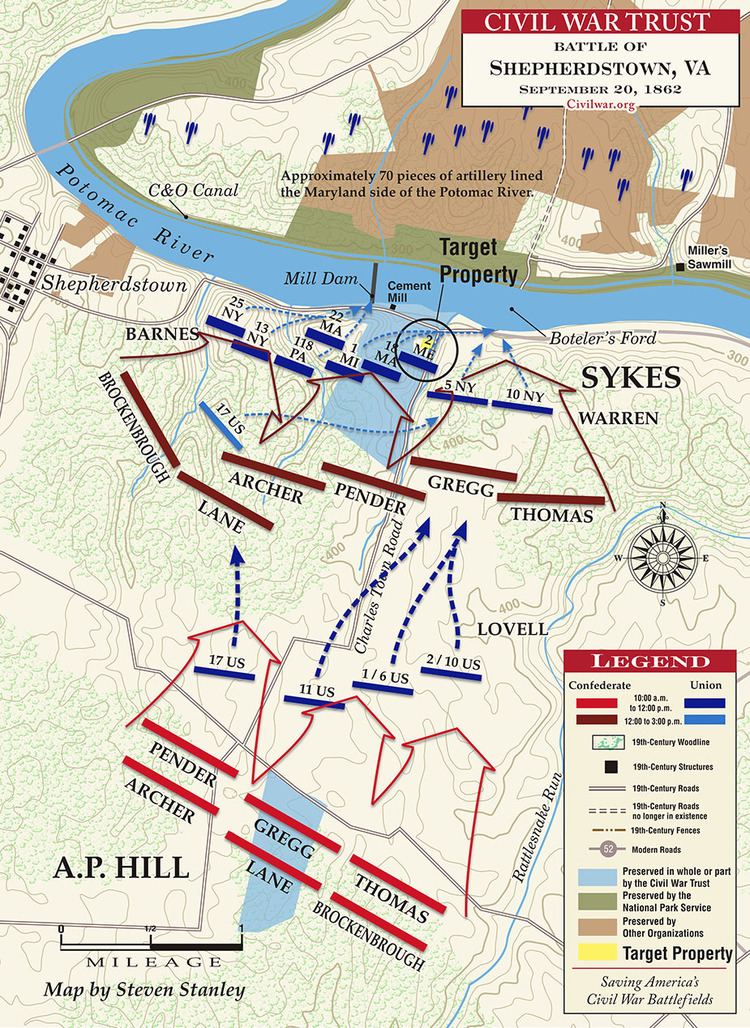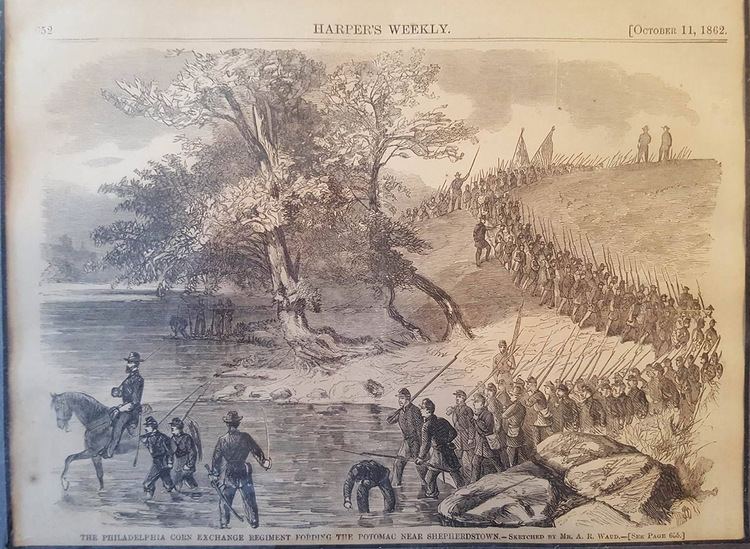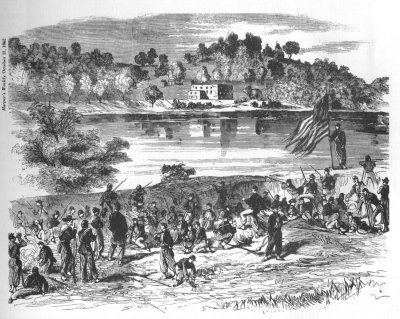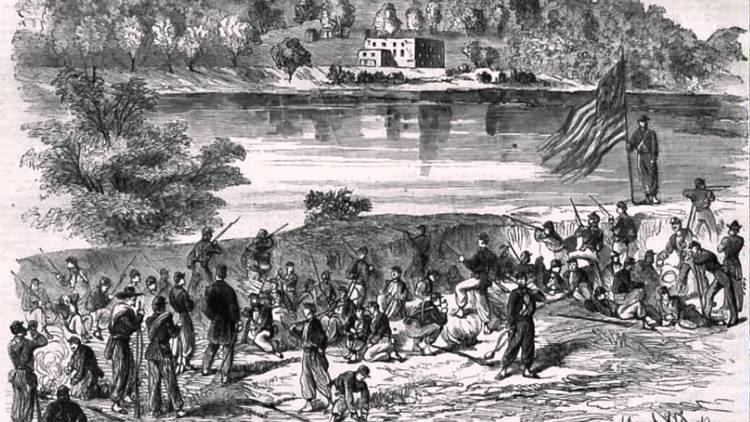2 divisions 2 divisions Result Confederate victory | Dates 19 Sep 1862 – 20 Sep 1862 | |
366 (73 killed, 163 wounded, 132 captured/missing) 307 (36 killed, 267 wounded, 6 captured/missing) Location Jefferson County, West Virginia, United States Combatants Confederate States of America, Union Similar American Civil War, Maryland Campaign, Battle of Harpers Ferry, Battle of South Mountain, Bristoe Campaign | ||
Stop 7 battle of shepherdstown 1862
The Battle of Shepherdstown, also known as the Battle of Boteler's Ford, took place September 19–20, 1862, in Jefferson County, Virginia (now West Virginia), at the end of the Maryland Campaign of the American Civil War.
Contents
- Stop 7 battle of shepherdstown 1862
- One small blunder the fateful battle of shepherdstown va sept 1862
- Background
- Battle
- Aftermath
- References

One small blunder the fateful battle of shepherdstown va sept 1862
Background
After the Battle of Antietam, Confederate Gen. Robert E. Lee's Army of Northern Virginia prepared to defend against a Federal assault that never came. After an improvised truce for both sides to recover and exchange their wounded, Lee's forces began withdrawing across the Potomac River on the evening of September 18 to return to Virginia. Lee left behind a rearguard of two infantry brigades and 44 or 45 guns under his chief of artillery, Brig. Gen. William N. Pendleton, to hold Boteler's Ford.
Battle

Shortly before dusk on September 19, Union Brig. Gen. Charles Griffin sent two regiments, the 1st U.S. Sharpshooters and the 4th Michigan, across the Potomac River at Boteler's Ford. They attacked Pendleton's rearguard, capturing four artillery pieces before being recalled. Pendleton incorrectly reported to Gen. Robert E. Lee that he had lost all 44 guns of his artillery reserve.

Early on September 20, Porter sent two brigades across the Potomac on a reconnaissance-in-force. Major Charles Lovell's brigade of Regulars encountered Maj. Gen. A. P. Hill's "Light Division" about a mile from the river. While withdrawing back to the ford Hill's men attacked under a withering hail of federal artillery fire, which inflicted tremendous casualties.

Col. James Barnes's brigade was ordered to the top of the bluffs to cover the retreat, and two more Federal brigades were ordered to cross to the Virginia side of the river. After a violent clash along the heights bordering the river, Porter ordered a withdrawal. However, the colonel of the inexperienced 118th Pennsylvania (the "Corn Exchange" Regiment) refused to retire until orders were received through the proper chain of command. In this engagement, their first time under fire, the 118th Pennsylvania were driven in by four Confederate brigades and suffered 36% losses.
Aftermath

The total Union dead and wounded at Shepherdstown makes it the bloodiest battle fought in what would become the state of West Virginia. The battle convinced both army commanders that the Maryland Campaign was over. George McClellan decided that an active pursuit of the enemy was not possible at this time and established a defensive posture along the Maryland bank. And for the Confederates, Robert E. Lee chose to abort his army's movement back into Maryland. With the Confederates driven from Northern soil, President Abraham Lincoln used the opportunity to issue the Preliminary Emancipation Proclamation on September 22, 1862.
